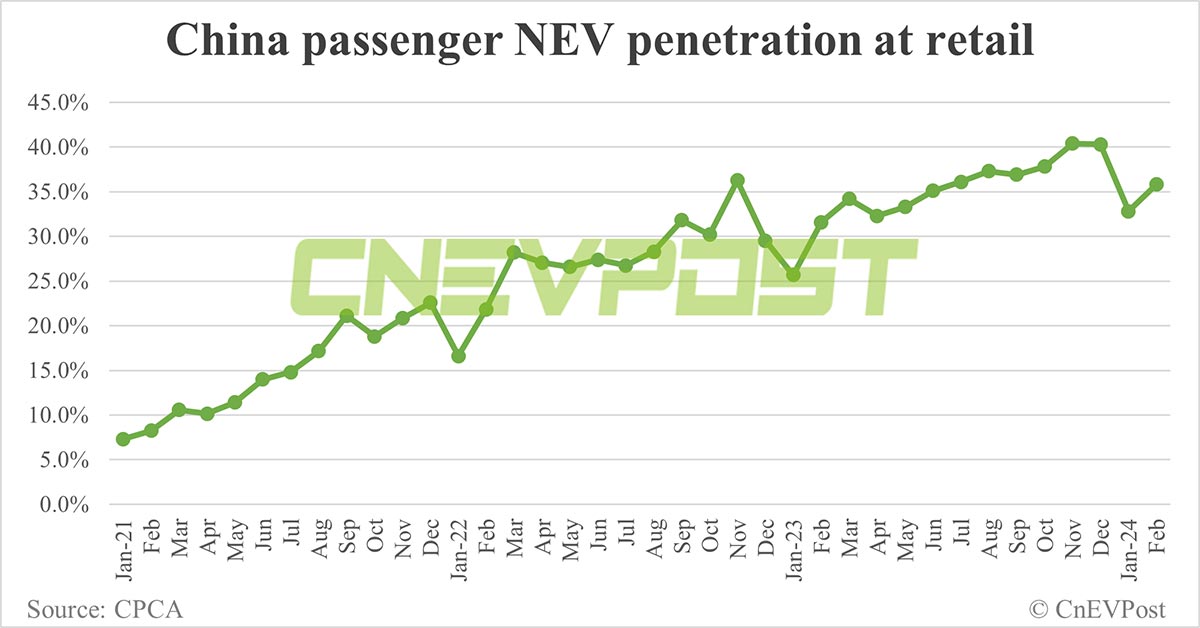BYD's chairman predicted a month ago that China's monthly NEV penetration rate would exceed 50 percent within this year, and now he expects that figure to be seen within the next three months.
(BYD chairman and president Wang Chuanfu speaks at China EV 100 Forum on March 16, 2024. Image credit: China EV 100 Forum)
A month ago, BYD (OTCMKTS: BYDDF) chairman and president Wang Chuanfu predicted that China could see monthly new energy vehicle (NEV) penetration exceed 50 percent within this year.
Now, he expects that number to be seen within the next three months.
"The penetration rate of NEVs crossed 48.2 percent last week, and if it continues at this rate, I estimate that the penetration could cross 50 percent in the next three months," Wang said in a speech at the China EV 100 Forum in Beijing today.
That penetration rate could even be higher in the next three months, meaning NEVs will dominate the market, Wang said.
China saw monthly NEV penetration rate exceeded 40 percent in 2023 and the figure was expected to exceed 50 percent this year, Wang said February 18 at a conference held by the Guangdong provincial government.
In China, NEVs include battery electric vehicles (BEVs), plug-in hybrid electric vehicles (PHEVs), and fuel cell vehicles. About half of BYD's monthly sales are BEVs and the other half are PHEVs.
With the current opportunities and challenges, players in China's NEV industry need to embrace change and stick to the right strategic direction, he said in his speech today.
NEVs are an irreversible trend, and new things see market change faster and more efficiently in China than abroad, he said.
In 2023, global sales of new energy passenger vehicles exceeded 13 million units, with an overall penetration rate of about 18 percent, Wang noted.
Last year, China's domestic sales of new energy passenger vehicles were roughly 7.88 million units, with an overall penetration rate of more than 35 percent, he said.
Along with enhanced R&D efforts for NEVs, the number of new models entering the market is rising rapidly, he said, adding that China's NEV transformation continues to advance and is breaking through the tipping point of iteration.
If China's NEV penetration rises from 35 percent last year to 45 percent for the whole of this year, that would mean an additional 2 million NEV sales, Wang said.
At the same time, overall sales could see significant growth as exports of NEVs increase, he said.
Wang also noted that the market competition is getting tougher, and the NEV industry is entering a stage of tough elimination for the weak.
On the one hand, China's automotive industry, after 70 years of development, has entered a structural adjustment, and looking around the world, it is inevitable that industry concentration will increase, he said.
On the other hand, China's NEV industry has gone through 20 years of development and has entered a cyclical adjustment stage, and players need to gain scale effect and brand advantage as soon as possible, he said.



